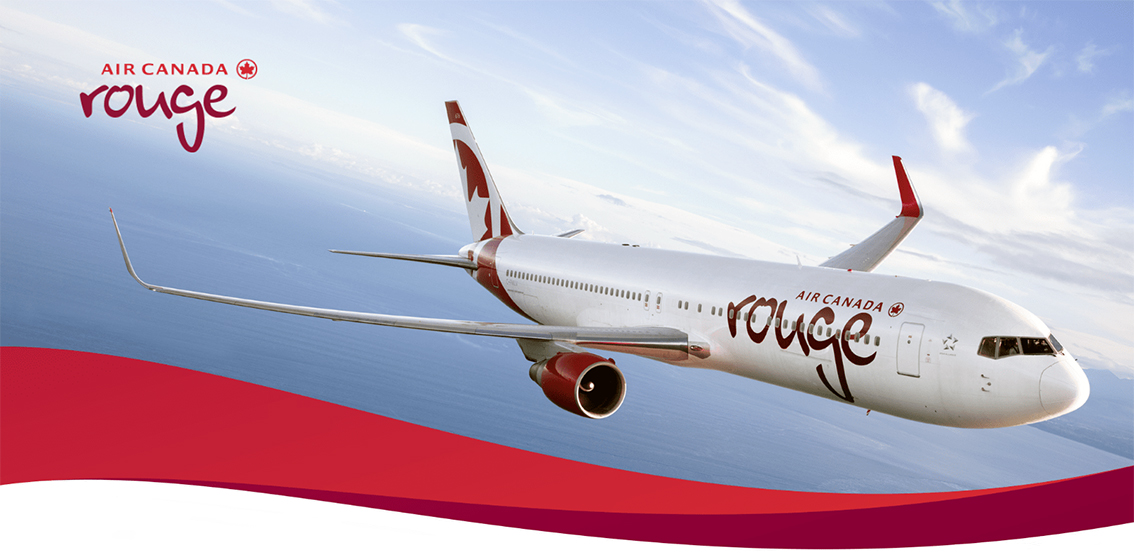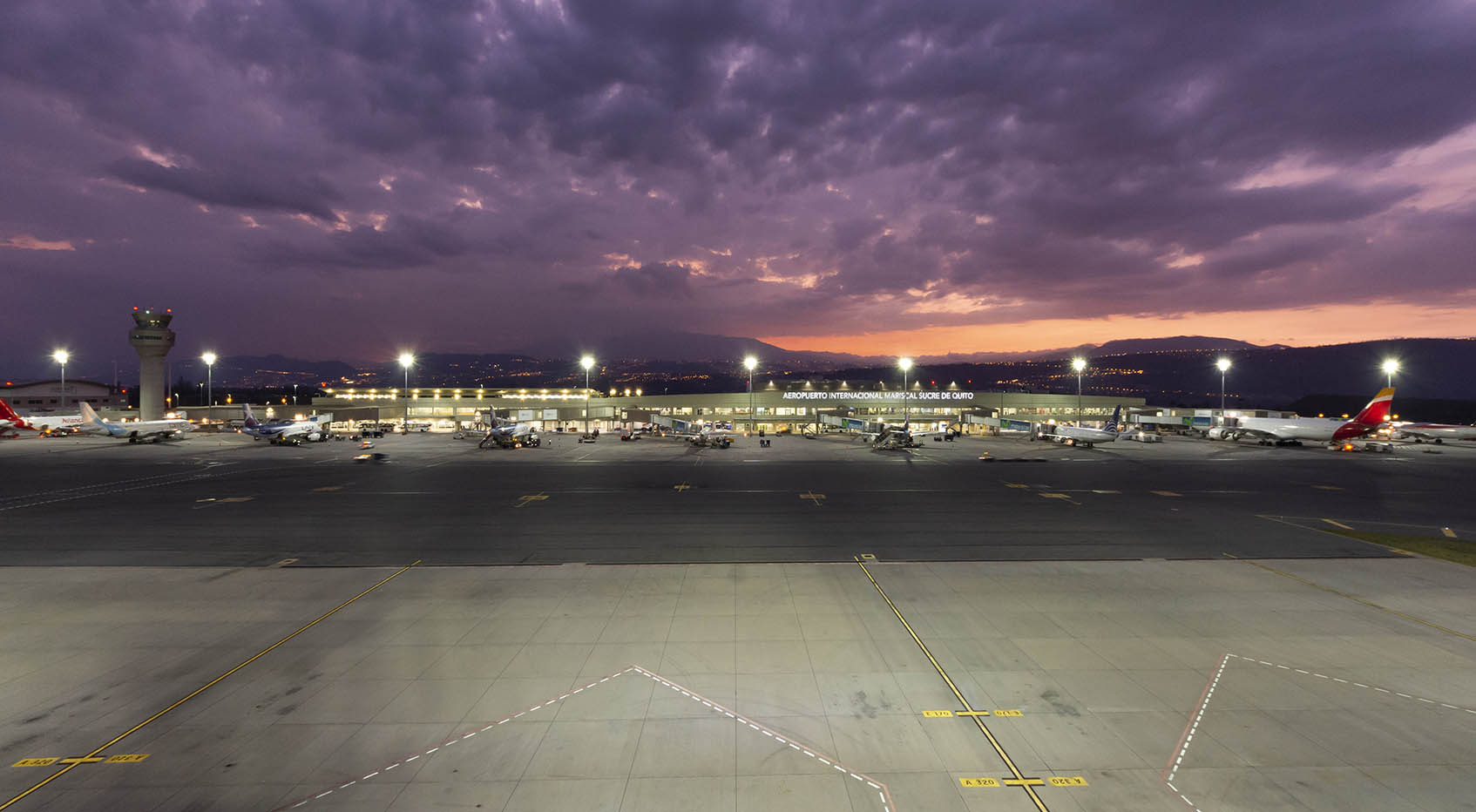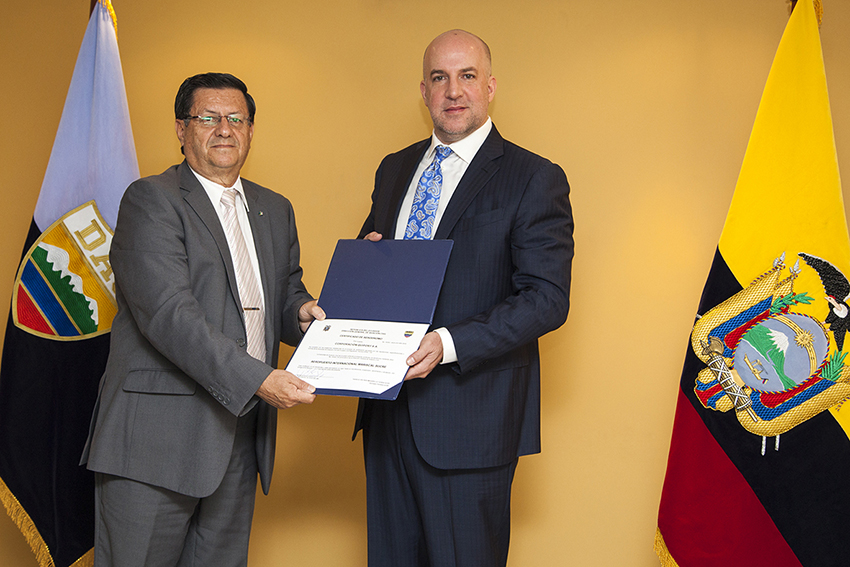Month: February 2019
AIR CANADA ROUGE TO COMMENCE OPERATIONS IN QUITO

- As of December 2019, this Canadian airline becomes the first non-stop carrier connecting Ecuador and Canada. Quito is thus consolidated as an important tourist destination for the Canadian market.
According to a press release issued this morning, Air Canada Rouge, an affiliate of Air Canada – the major Canadian airline – announced non-stop flights between Toronto and Quito beginning in December of this year. The airline will use a Boeing 767-300 wide cabin aircraft to cover the route with three weekly frequencies initially.
The arrival of a new leisure airline such as Air Canada Rouge in Quito is the result of substantial joint efforts by the central Government, the Municipality of Quito and Corporación Quiport who began negotiations with the airline three years ago.
Ecuadorian Tourism Minister, Rosi Prado de Holguin, said that the Tourism Ministry believes that connectivity is an essential axis for promoting the arrival of visitors to our country. “Connectivity is essential for tourists to fall in love with the country ‘of the four worlds’. Besides, our objective is to have tourism as the third source of non-petroleum income in our country and, as such, each day we work to promote Ecuador all over the world”, she said.
As Air Canada’s airline specialized in tourist destinations, Air Canada Rouge offers value and options to people who love to travel. With flights to more than 70 destinations throughout the world, Air Canada Rouge’s equipment includes 53 aircraft and 2,000 employees and has served more than 25 million customers since it was launched five years ago. Air Canada Rouge’s on board offer includes entertainment, premium cabin, specialized customer service, high velocity satellite Internet (on select flights), and connectivity with Air Canada network and the Star Alliance group.
“Air Canada is expanding its presence in South America as part of its international growth strategy from our global hub in Toronto. Quito, as Ecuador’s capital city, is a major market for tourism and cargo, and Ecuador has an important number of Canadian citizens residing in the country who will benefit from this convenient non-stop flight. Furthermore, our expansion in South America gives us the opportunity to efficiently use our aircraft during the winter months when destinations to the South are more popular”, said Mark Galardo, Air Canada Routes Planning Vice President.
Such increased connectivity opens doors not only to more tourist travel but also serves as a bridge joining peoples and cultures and also brings the Ecuadorian community residing in Canada closer to its country of origin.
“The announcement of Air Canada Rouge’s direct light between Quito and Toronto is significant. This new flight will be a catalyst that will strengthen the ties between Ecuador and Canada and, besides, will provide better travel options to tourists and students, thereby improving commercial exchange. We congratulate Air Canada and the Quito International Airport for this important success!” said Sylvie Bédard, Canadian Ambassador to Ecuador.
In the meantime, Alvaro Maldonado, Secretary for Productive Development and Competiveness of the Municipality of Quito, recalled that “in the past years Quito has substantially increased its connectivity with new routes and more frecuencies to important international destinations. Having the direct Quito-Toronto route will bring new opportunities and ease to reach Canada, one of the world’s most important and high-potential markets. More tourism, increased business, greater connectivity and more competitivity. This reflects great teamwork between the public and private sectors.”
According to Andrew O’Brian, President and Director General of Corporación Quiport and responsible for the overall management of the Quito International Airport, “Air Canada Rouge’s decision to begin operations between Toronto and Quito is very important because not only are we opening a new route but also a new market with much potential. The Ecuadorian community in Toronto is very important, and with this new flight we are opening a door so that it will be better connected its home country. On the other hand, I am sure that Quito is a tourist destination with great potential for Canadian travelers who are eager to visit different places and different customs. In this sense, Ecuador has much to offer in cultural and historic tourism, in adventure and in nature, not forgetting of course its marvelous beaches.
The route to Toronto will also allow Ecuadorian tourists to get closer to Canada, a very friendly country and with unique attractions for Ecuadorians thanks to the geographical and cultural contrast of both countries which, nonetheless, share a common characteristic: kind treatment and friendliness to visitors.”
QUITO INTERNATIONAL AIRPORT CELEBRATES 6TH ANNIVERSARY WITH A POSITIVE BALANCE

- 6 years connecting with quality from the Center of the World
Mariscal Sucre Airport began operating on February 20, 2013, becoming a driver of development for the Ecuadorian capital and transforming the city’s air transport. This year it reaches its sixth anniversary with a positive balance for connectivity, infrastructure, operations and its contribution to the economic development of Quito and the country. For both passenger and cargo activities, the airport, managed by Corporación Quiport, has undergone a process of consolidation that will allow it to face new challenges in the best conditions with an investment that has reached more than US$130,000,000 since 2013.
The operation of Quito Airport not only concerns the movement of aircraft, which is very important for tourism and business, but it also means providing efficient, safe and high quality airport services which give the best experience to the users of the airport. For 2020, the terminal will grow by a total of 18%, with a 21% increase in the processing area as part of Quiport’s US$ 90 million investment plan.
As regards connectivity, currently there are five more passenger airlines than at the start of the airport’s operations and an annual average of 14 cargo airlines use the facilities. These activities resulted in the transport of 5.2 million passengers and the handling of 231,945 metric tons of cargo by the end of 2018. Quiport’s strategy for developing routes is based on positioning Quito as a destination to establish new routes and increase flights and seat offering, thereby making the most of the airport’s operational advantages. This will achieve the vision of traditional airlines as well as low cost airlines continuing to arrive at Mariscal Sucre and offering more destinations and connection options to the people of Quito.
For Andrew O’Brian, President and CEO of Quiport, “Quito airport has been a key player in the development and growth of air transport in Ecuador through coordinated work with the national government, the Municipality of Quito and the Directorate General of Civil Aviation. So we begin this sixth year of operation renewing our commitment to the city and the country”.
Creating Employment
An important part of the impact of Quito International Airport is shown by the thousands of direct, indirect and induced jobs that it has created. The average salary of airport workers is 97% higher than the national average, thus contributing to the improvement in the quality of life. For the people of the six parishes in Quito International Airport’s area of influence (Puembo, Pifo, Tababela, Yaruquí, El Quinche, Checa) the opening of the airport has meant the creation of new transport options and improvement of the existing ones; better access to goods and services that enable the people to carry out their activities more easily; and the creation of new businesses.
Social Development
Plans and programs have been established to respond to the current social dynamics, based on a detailed analysis of the requests and needs of the people who live in the six parishes neighboring the airport. In 6 years, Quiport’s social responsibility programs have benefitted more than 100,000 people who live in the communities close to the airport.
Environment
Since 2006 Quiport has developed its operations on the principles of responsibility and respect for the environment. This motivates Quiport to lead initiatives focused on people and processes in order to help fight against climate change, to strengthen public knowledge about the environment, to protect biodiversity and to mitigate the potential environmental impact that airport operations might have. Through Quiport initiatives, more than 4,500 native trees have been planted on the Caraburo plateau, where Quito airport is located.
Recognition
- South America’s Leading Airport with an operating time of 99.7% with efficient, safe and high quality operations.
- Aerodrome Certificate, Mariscal Sucre International Airport Quito (MSIA) issued by the Directorate General of Civil Aviation, which confirms that the Mariscal Sucre Airport, its installations, services, equipment, systems and procedures guarantee the safety, regularity and efficiency of its operations.
- World Travel Awards – South America’s Leading Airport 2014-2015-2016-2017-2018
- Skytrax: Best airport staff 2017-2018
4-star airport 2016-2017-2018
Best regional airport in South America 2016-2017-2018
Every year we reaffirm our commitment to continue working for the development of air transport in Ecuador together with national and local authorities, airlines and productive sectors.
ECUADORIAN AVIATION AUTHORITY RENEWS QUITO AIRPORT’S AERODROME CERTIFICATION

- On the eve of the anniversary of operations at Quito International Airport, the Directorate General of Civil Aviation renews Quiport’s Aerodrome Certification, which is valid for 5 years.
The Directorate General of Civil Aviation (DGAC) is the aviation authority than plans, manages and controls air operations in Ecuadorian air space. This entity has issued the renewed Aerodrome Certification of Mariscal Sucre International Airport to Corporación Quiport, the concessionaire of Quito’s airport service.
The certification guarantees that the airport and Corporación Quiport, as the entity in charge of its management and operation, meet the specifications issued by the International Civil Aviation Organization (ICAO) and DGAC relating to facilities and operating procedures.
The Aerodrome Certification is valid for five years and approves the Aerodrome Manual, a document that contains the technical specifications for operating procedures; construction and maintenance; infrastructure; Safety Management Systems; Rescue and Fire Fighting Service; Emergency Plan and the Wildlife Management and Control Plan of Quito Airport.
Compliance with the Aerodrome Manual, endorsed by the aviation authority through its Aerodrome Certification, guarantees the safety, regularity and efficiency of airport operations and aims to raise the standards of safety and competitiveness at Quito Airport.
Upon delivering the Aerodrome Certification, Patricio Zavala, director of DGAC, said: “the renewal of the Aerodrome Certification translates into a commitment to greater aviation technology and air safety in Ecuador. The aim of our work is for all airports to improve their safety standards and to achieve worldwide recognition of the country.”
Andrew O’Brian, President and CEO of Quiport said: “we must emphasize that thanks to the coordinated work between the aviation authority and Quiport, we have not had any type of incident at Quito Airport. Our airport is safe and well-run thanks to the efforts of the more than 8,300 people who work here; including the staff at Customs, Immigration, DGAG, airlines and many more.”
The committed work by the staff at Quiport’s Operations and Maintenance Department, especially its Aviation Safety and Certification Management, and by the Directorate General of Civil Aviation ensures that operations at Quito Airport not only meet the country’s legal requirements and the parameters of the Civil Aviation Organization, but exceed them.
